On View
Artist Jose Dávila Plans a Portrait of LA by Sending Out Blank Sculptures—and Waiting for the Graffiti to Arrive
For Pacific Standard Time: LA/LA, Jose Dávila and the nonprofit LAND will scatter sculpture across the city.
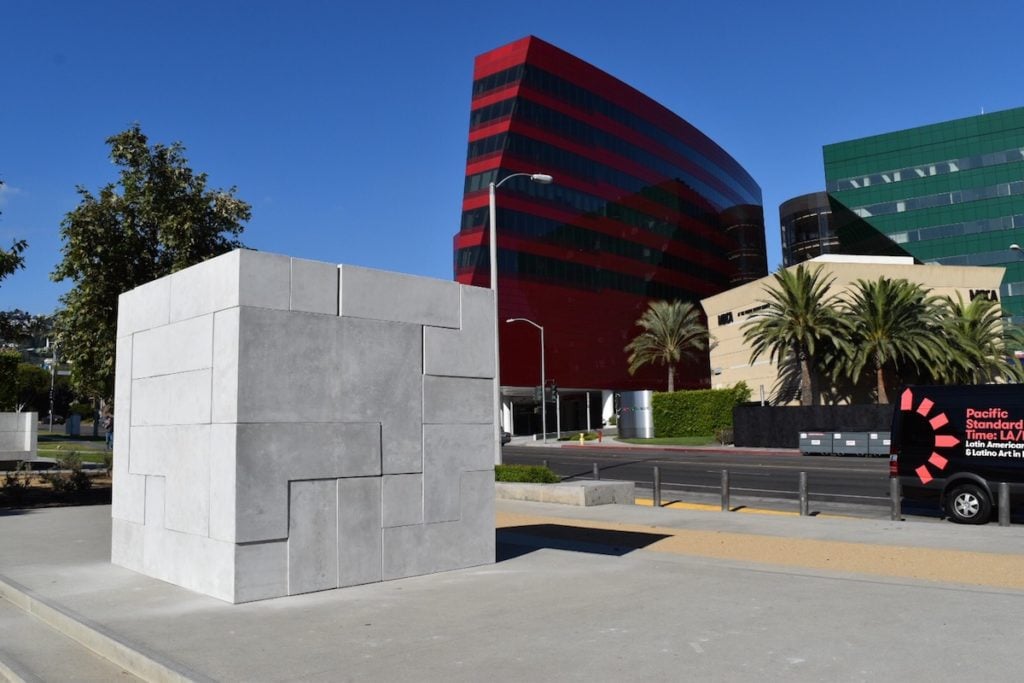
For Pacific Standard Time: LA/LA, Jose Dávila and the nonprofit LAND will scatter sculpture across the city.

Julia Halperin

If you visit the Santa Monica Pier this winter and sit down to look out at the ocean, pay careful attention to what’s underneath you. You just might be sitting on an artwork.
The Mexican artist Jose Dávila has teamed up with the public art nonprofit LAND to create a sprawling, continually unfolding installation that will travel to 20 carefully chosen spots across Los Angeles over the next nine months.
The project—the most ambitious work Dávila says he has ever created—was developed as LAND’s contribution to Pacific Standard Time: LA/LA, the Getty-funded initiative sponsoring Latin American and Latino art exhibitions that kicks off across Southern California this week. (The Getty supplied LAND with a total of $160,000 to research and execute the complex project.)
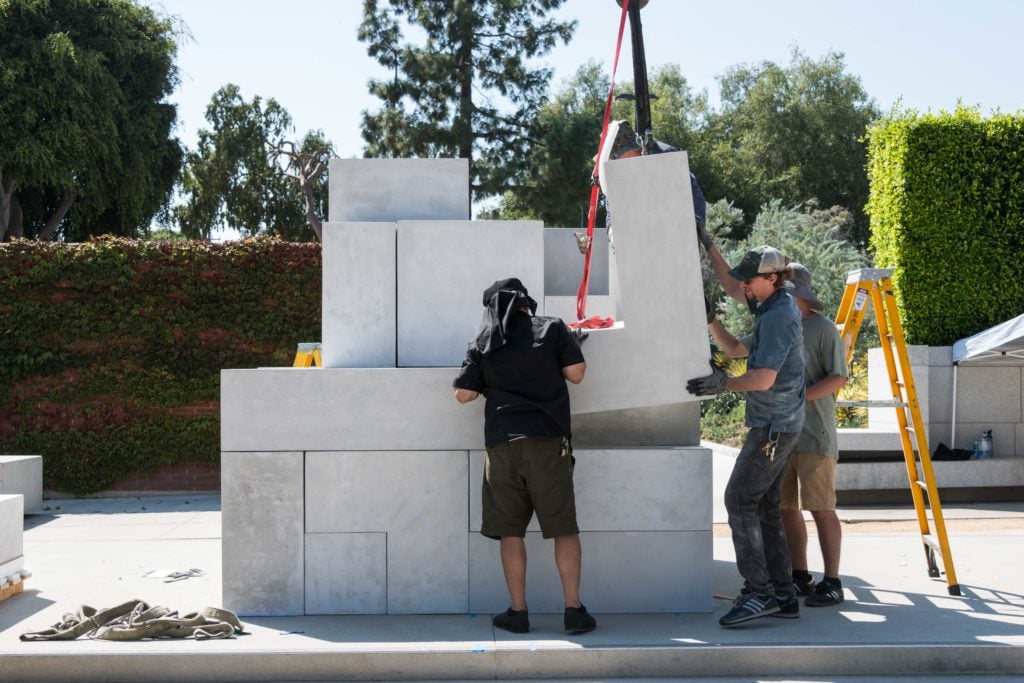
Installation of Jose Dávila’s Sense of Place (2017). Photo: Jeff McLane.
Right now, the work looks simple enough. Installed Tuesday on the edge of West Hollywood Park, Sense of Place (2017) is an eight-foot-square white cube of interlocking parts that looks like what might happen if Donald Judd met Jenga.
Over the next nine months, however, the cube will dissemble. Workers will transport its 40 heavy concrete slabs to different sites across Los Angeles, from Grand Central Market in downtown LA to Langer’s Delicatessen-Restaurant in Westlake. After the last of the slabs depart in March, the park will be empty—but only temporarily. In May, the 40 pieces will reunite at their original location.
“When they come back, visibly or not, they’ll bring their histories back to the site, creating a portrait of Los Angeles,” says Shamim Momin, the director of LAND. “We’re not exactly sure at this point how they are going to look,” she continued, but they can be expected to accrue graffiti, grime, and other site-specific wear and tear over their stay.
The idea of creating a fragmented sculpture felt particularly fitting for LA, which Momin describes as “one of the most condensed, fragmented cities that exists.”

Sense of Place Artist Rendering, Estudio Jose Dávila, 2017.
The slabs—made by hand at Dávila’s studio in Guadalajara and transported to LA on two flatbed trucks—will travel to tourist destinations, neighborhood gathering-spaces like the Brand Library and Art Center in Glendale, and more traditional art venues like the MAK Center for Art and Architecture in Hollywood.
The modules will be delivered in three batches, or what the artist calls “movements.” The sites for the final two movements have yet to be confirmed. (Dávila hopes to pay tribute to the sculpture’s Modernist form by displaying a module at one of LA’s great Modernist homes, but he hasn’t yet selected the lucky recipient.)
Despite its deceptively simple form, the cube required years of planning and complex engineering. Each slab—which weighs between 330 and 440 pounds—had to be carefully measured to ensure it would fit into the larger cube without any adhesive or rebar. Dávila, who originally trained as an architect, supplied LAND with a 400-page instruction manual to make certain there would be no questions about its assembly or disassembly.
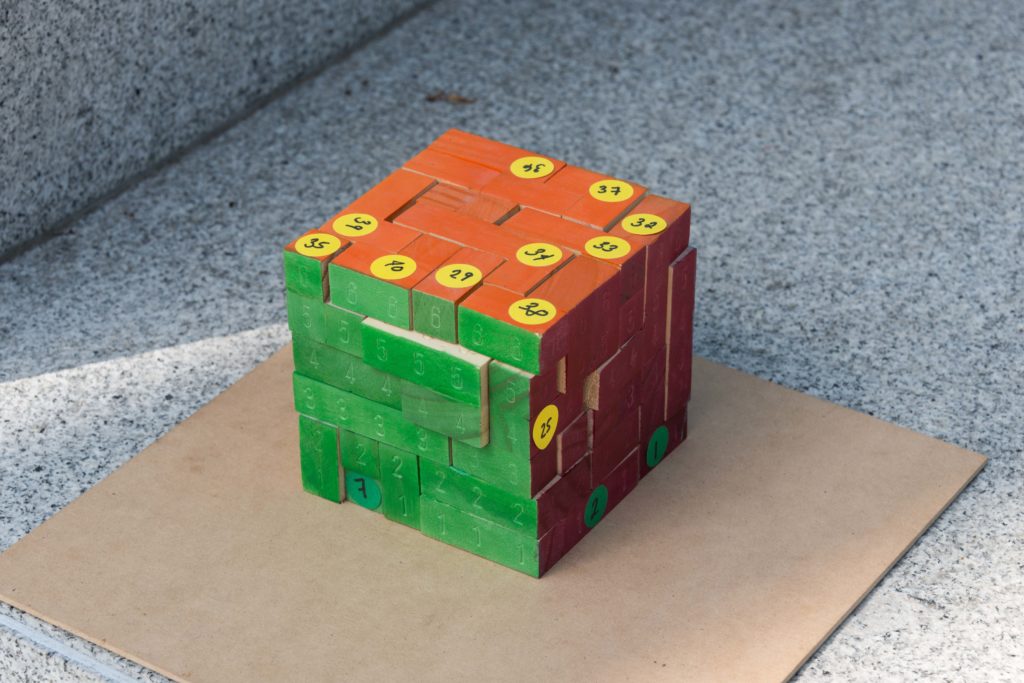
Model for Jose Dávila’s Sense of Place (2017). Photo: Jeff McLane.
Although the work, like most PST: LA/LA projects, was conceived before President Trump was elected, Dávila says it has taken on new resonance in light of the current administration.
“I’ve been thinking about [how the piece relates] to immigration: individual pieces have to travel and interact in a community, coming from outside, and then come back together—very different from when they left.”
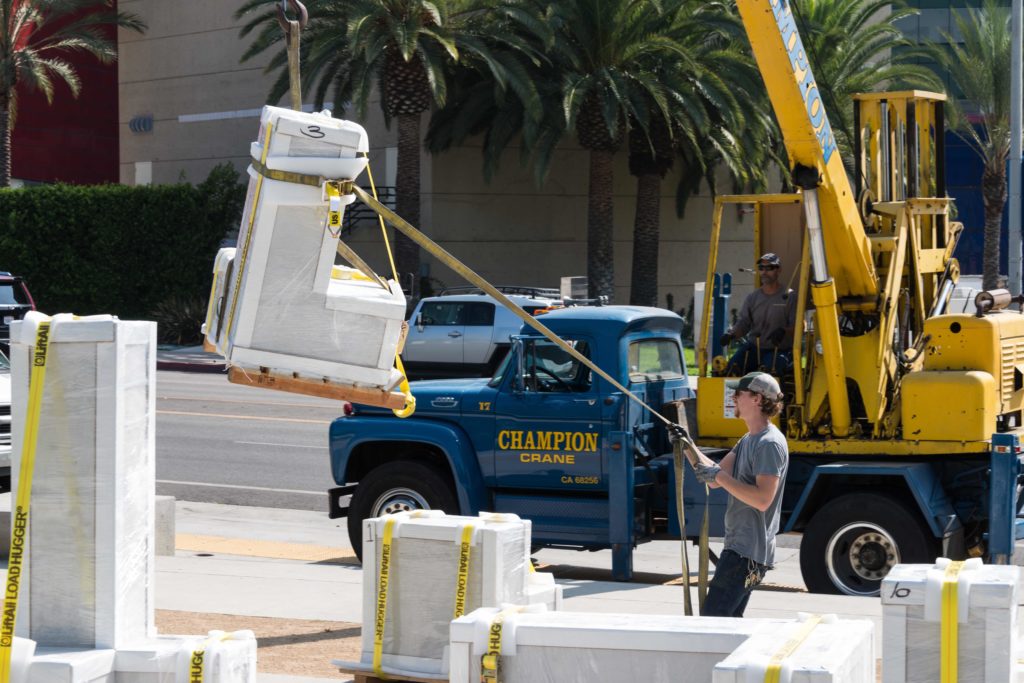
Installation of Jose Dávila’s Sense of Place (2017). Photo: Jeff McLane.
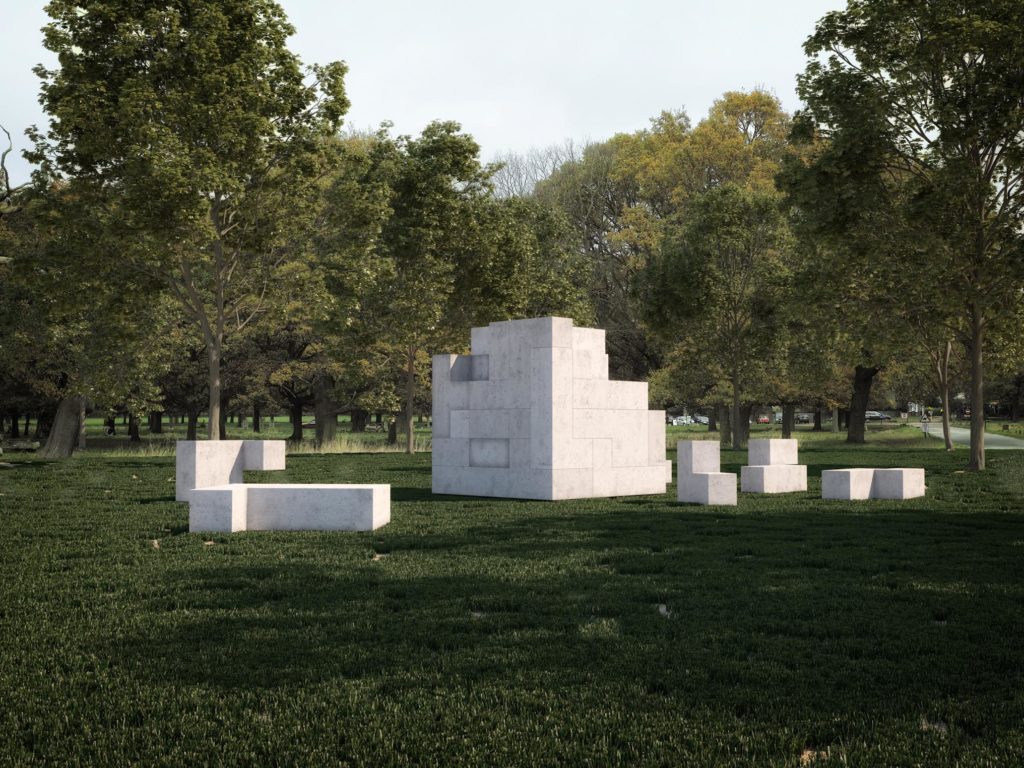
Sense of Place Artist Rendering, Estudio Jose Dávila, 2017.